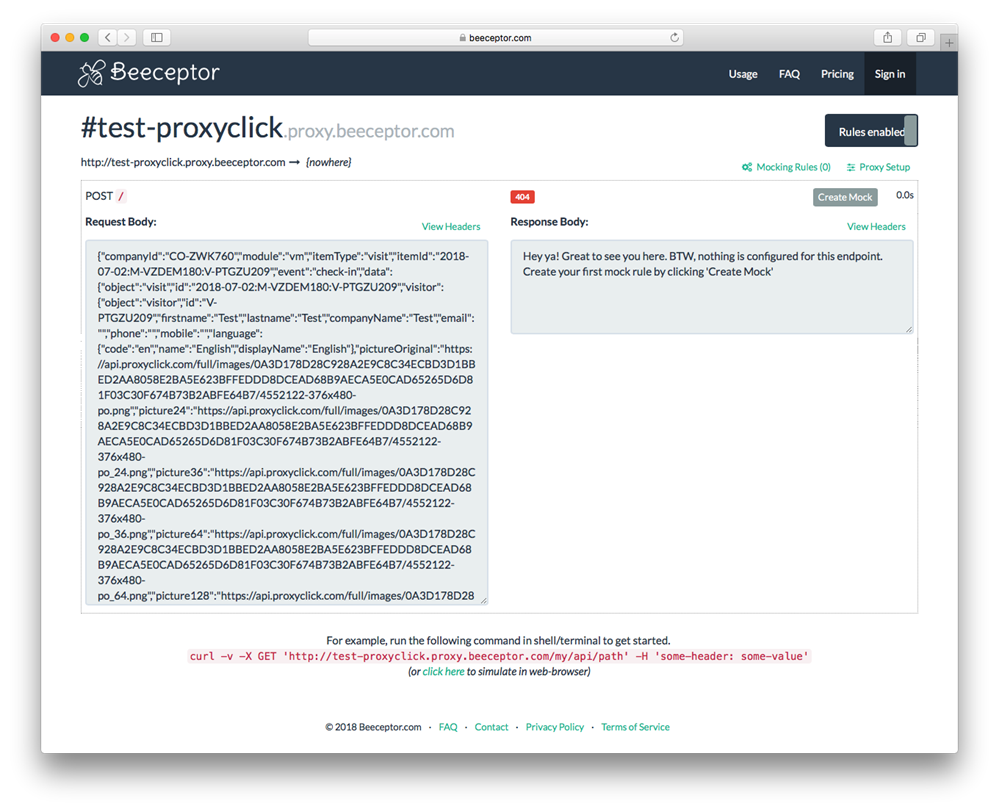Send info from Proxyclick to other systems using webhooks
What are webhooks?
Webhooks are a system of automated notifications indicating that an event has occurred in your Proxyclick account. Rather than requiring you to pull information via our API, webhooks push information to other systems when one or more of the following events happen on Proxyclick:
-
Visitor on-site
-
Visitor check-in
-
Visitor check-out
-
Visit created
-
Visit updated
-
Visit deleted
Information is delivered via HTTP POST to a so-called destination URL on the receiving system. The receiving system can then parse the information (JSON file) and use it for its own application.
When is this useful?
Examples of use cases for webhooks include:
-
Posting visitor info to a digital signage system so that visitors of the day are displayed on a large screen
-
Sending visitor mobile number at check-in so that your Wi-Fi system texts the visitor a unique Wi-Fi code
-
Send the visit info (date, time, visitor contact details) to a parking booking system in order to book a slot when preregistering the visitor
-
Send pictures of visitors taken on iPad to your internal system (eg, CRM) to enrich your customers’ profile
How to configure webhooks?
To configure a webhook, you’ll need to
-
Set up a destination URL in the receiving system (in the examples above, the receiving systems are the Wi-Fi, parking booking, or digital signage systems). You can also easily test Proxyclick webhooks with dummy URLs (see section “How to test webhooks quickly?”)
-
Go to Proxyclick dashboard and click the Settings gear in the left side menu bar.
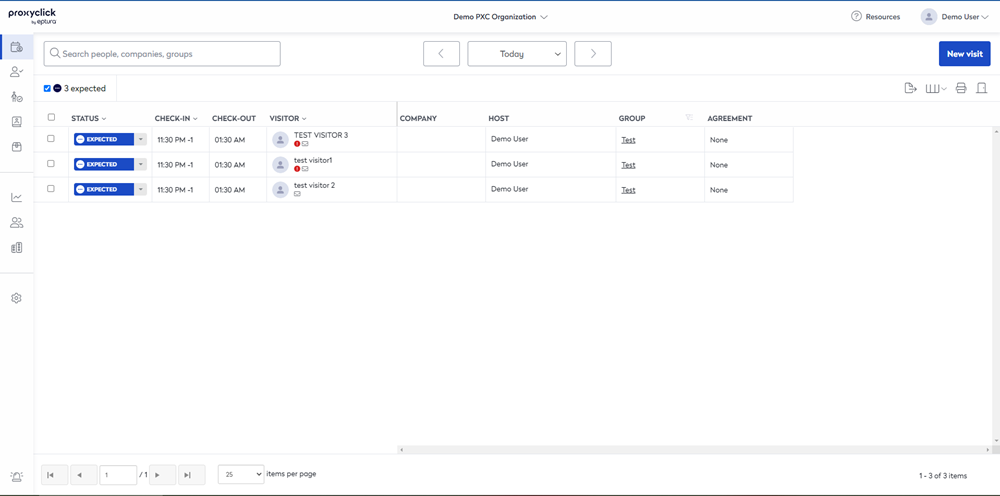
-
Then go to the INTEGRATIONS menu and find the “API and Webhooks” integration in the list. Click “Settings”.
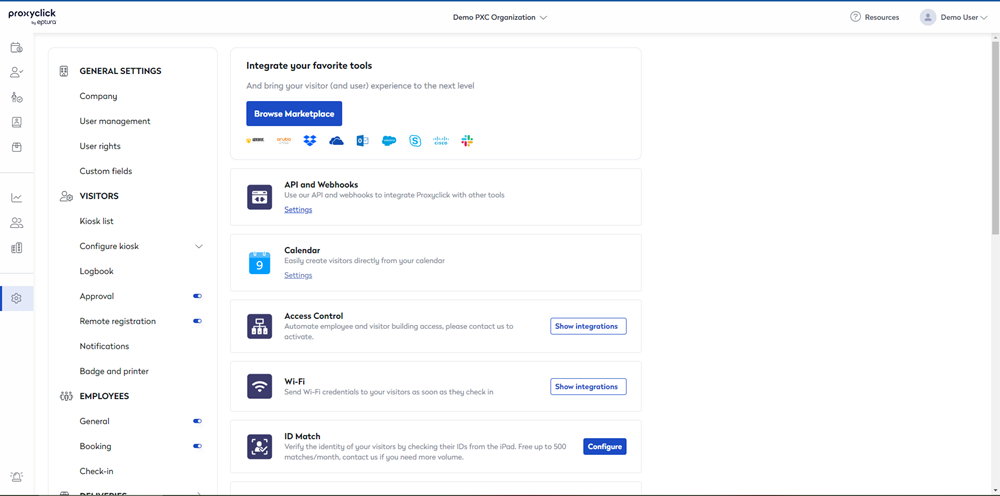
-
Click “Add webhook”.
-
Then, name your webhook, provide the destination URL, and select at least one of the trigger events.
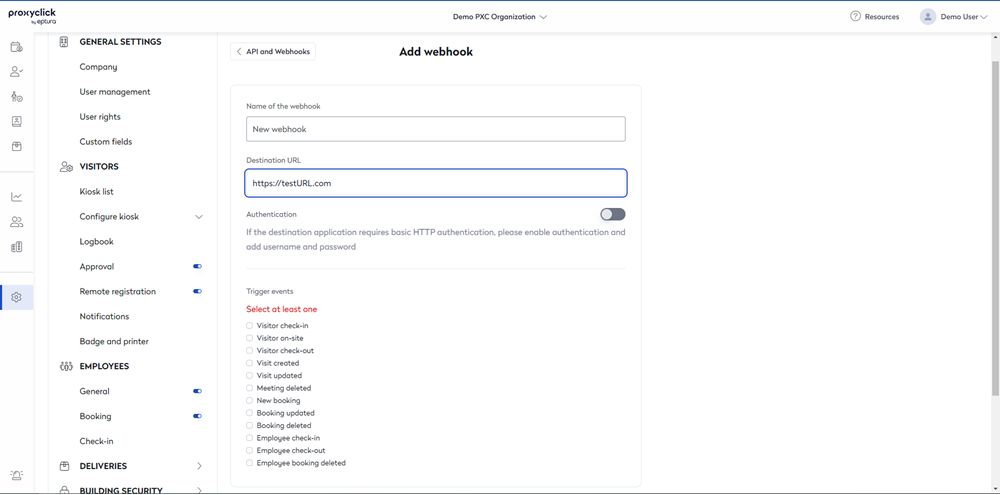
What information is sent?
Information sent depends on the triggering event:
-
When the event is “Visitor check-in” and/or “visitor check-out,” the following info is sent.
-
When the event is “Visit created,” and/or “Visit updated,” and/or “Visit deleted,” the following info is sent.
We only provide backward compatibility on the attributes documented in the two links above. For this reason, we recommend only using publicly documented attributes (and no other attributes you can find in the JSON file).
Securing webhooks
We support HTTP and HTTPS destination URLs, and we recommend you provide an HTTPS URL to protect notifications.
If your destination URL needs basic authentication, you can enter the username and password in Proxyclick.
How to quickly test webhooks?
If you want to quickly see how easy, fast, and powerful Proxyclick’s webhooks work, you can do a quick test with Beepceptor.
-
First, create your sub-domain on https://beeceptor.com:
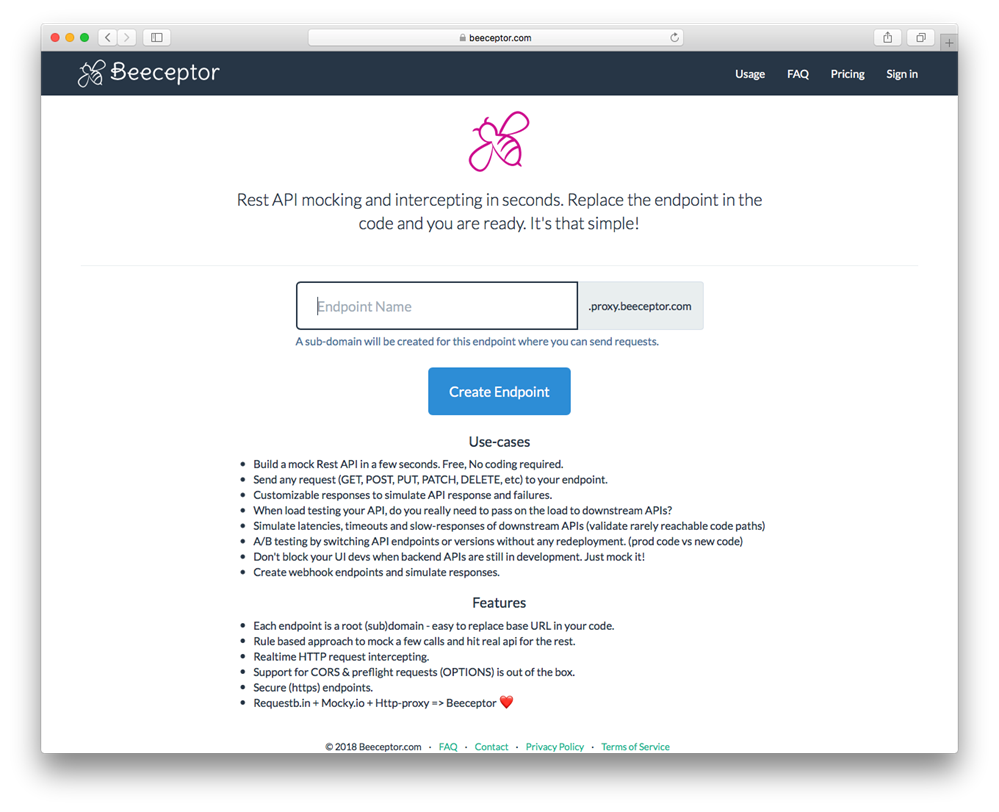
Copy the Beepceptor URL and paste it into Proxyclick’s Webhooks configuration page.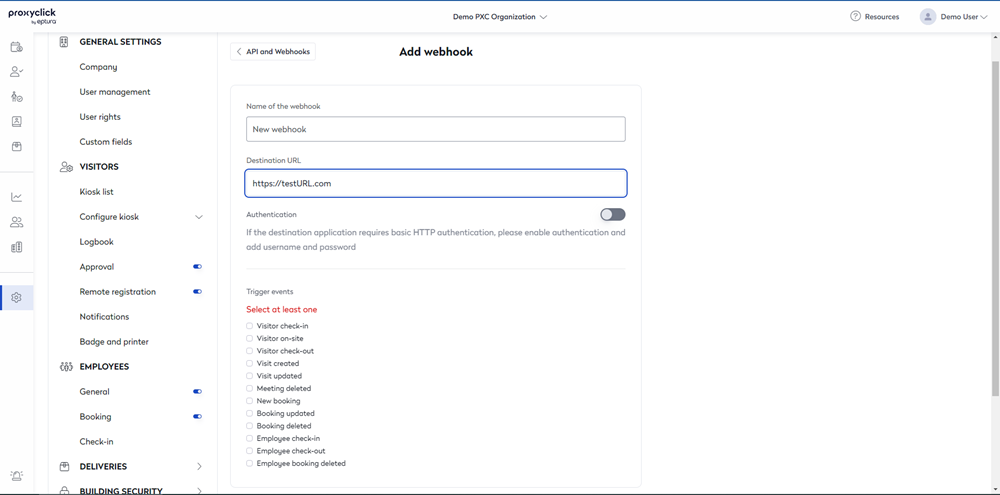
Perform the trigger event (e.g., a visitor check-in) and look at the information pushed by Proxyclick’s system.
